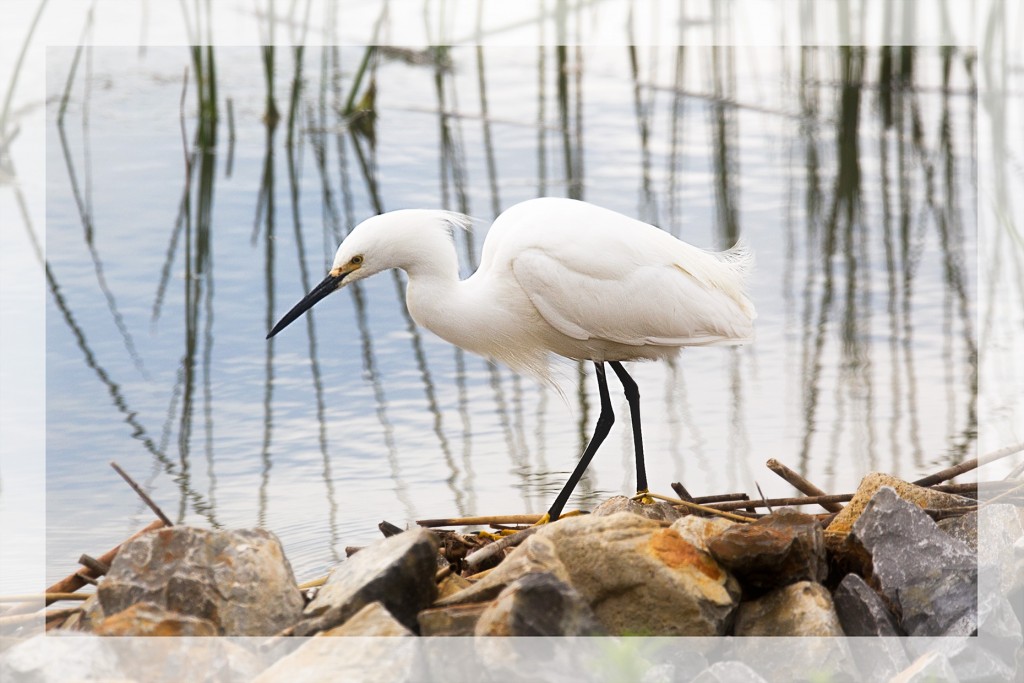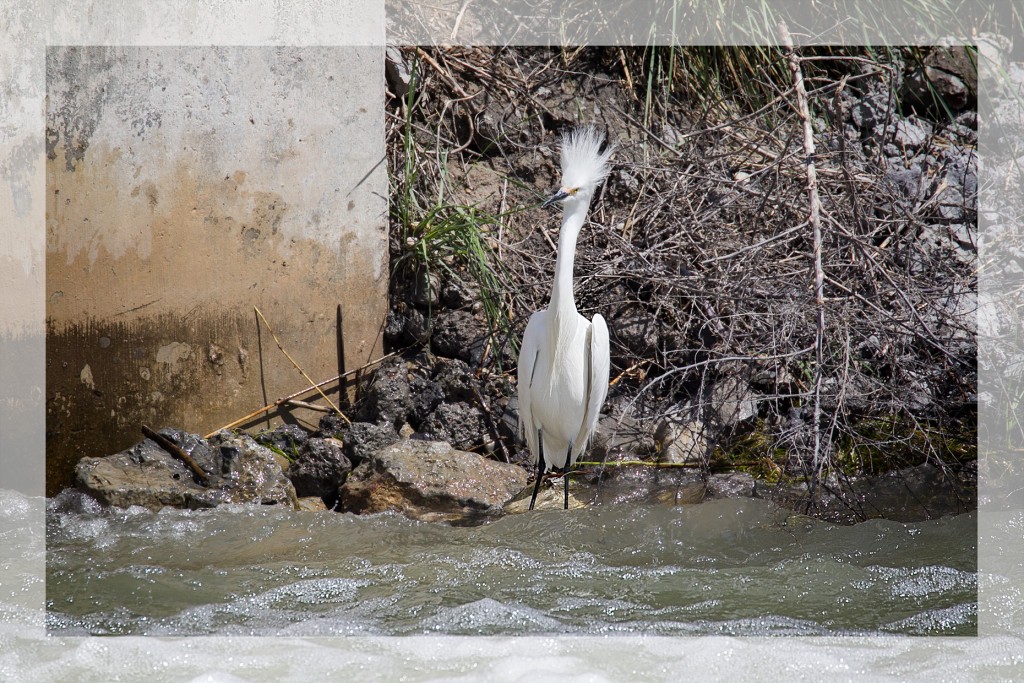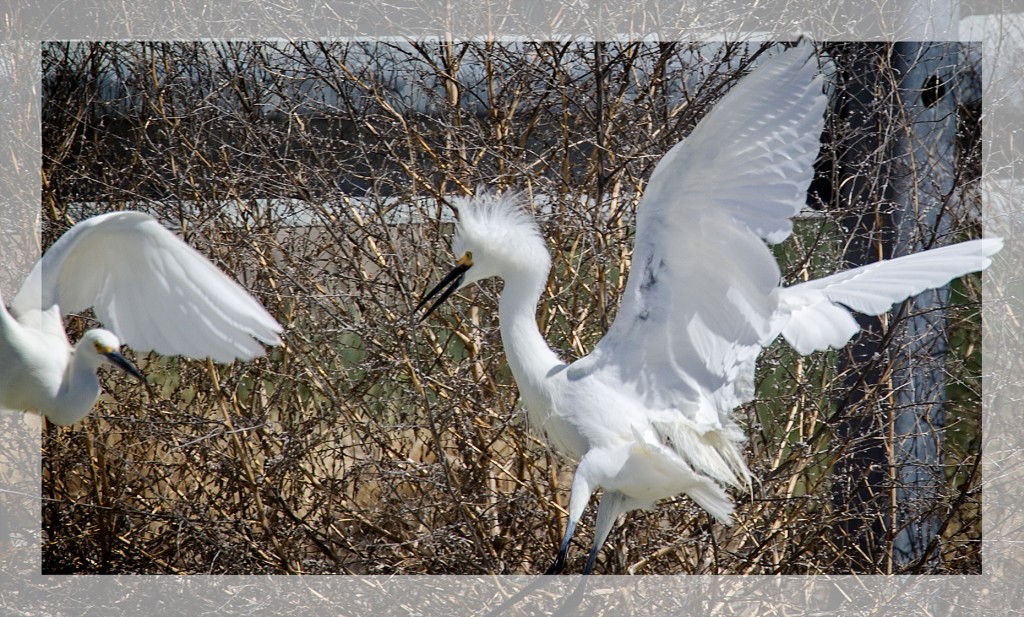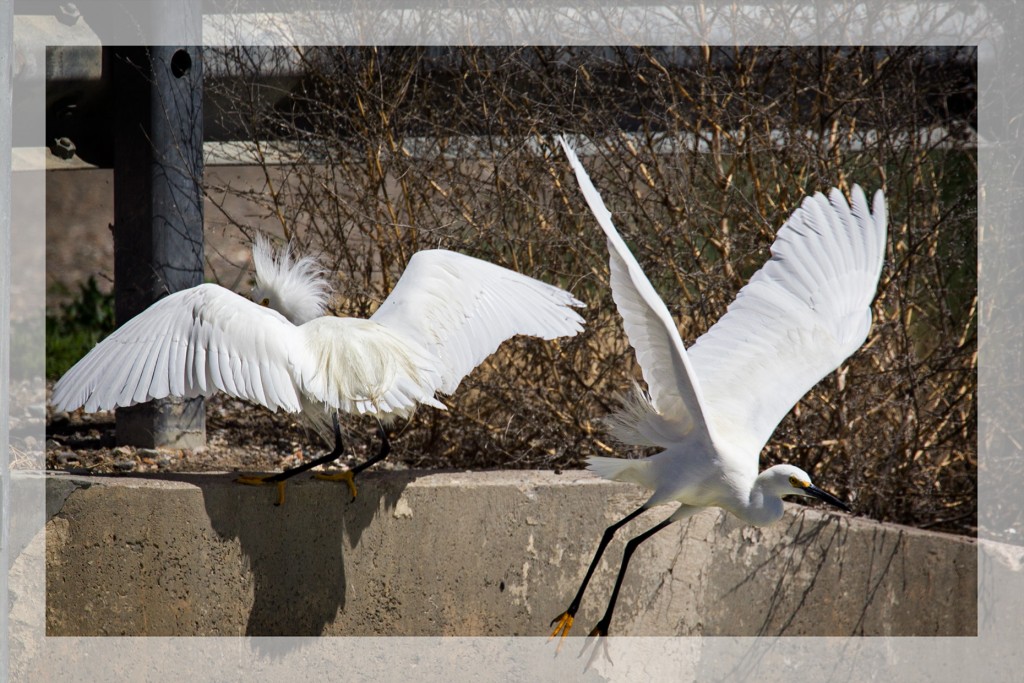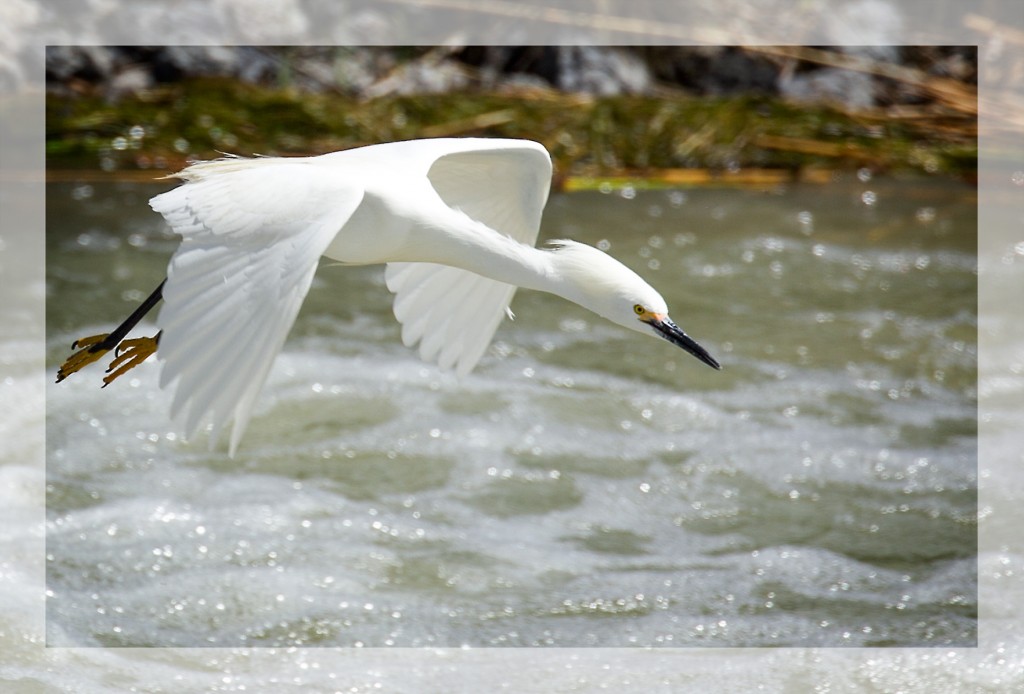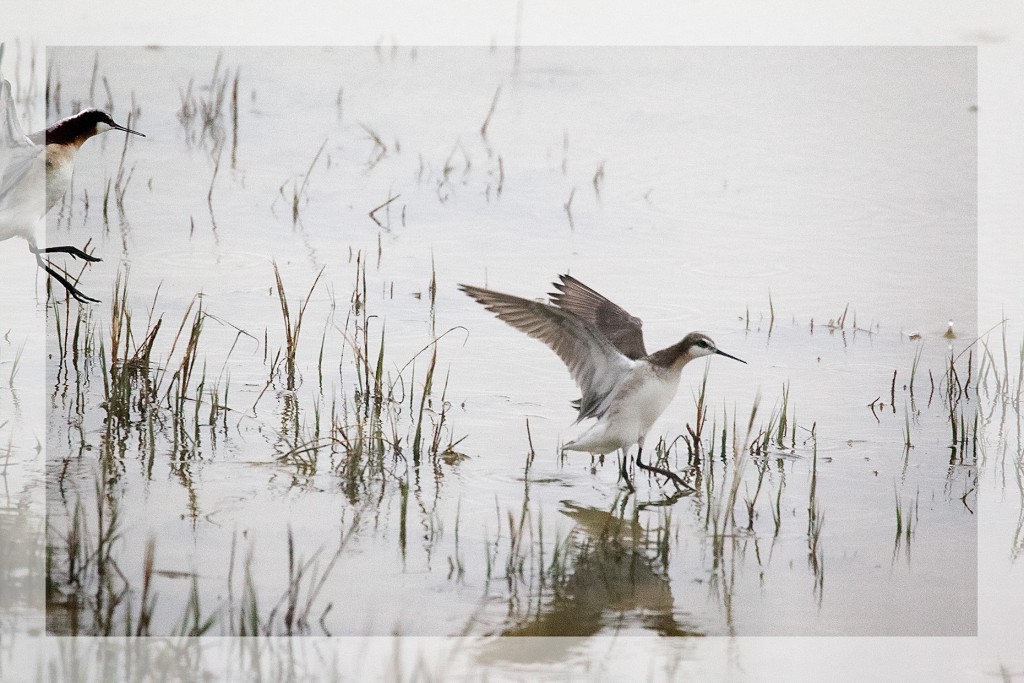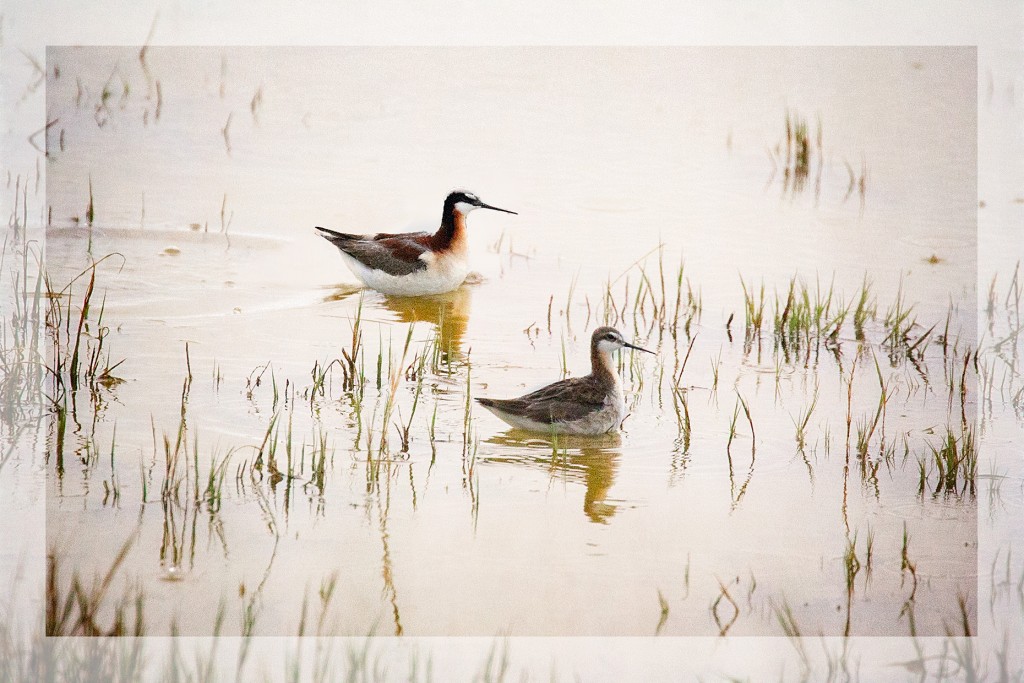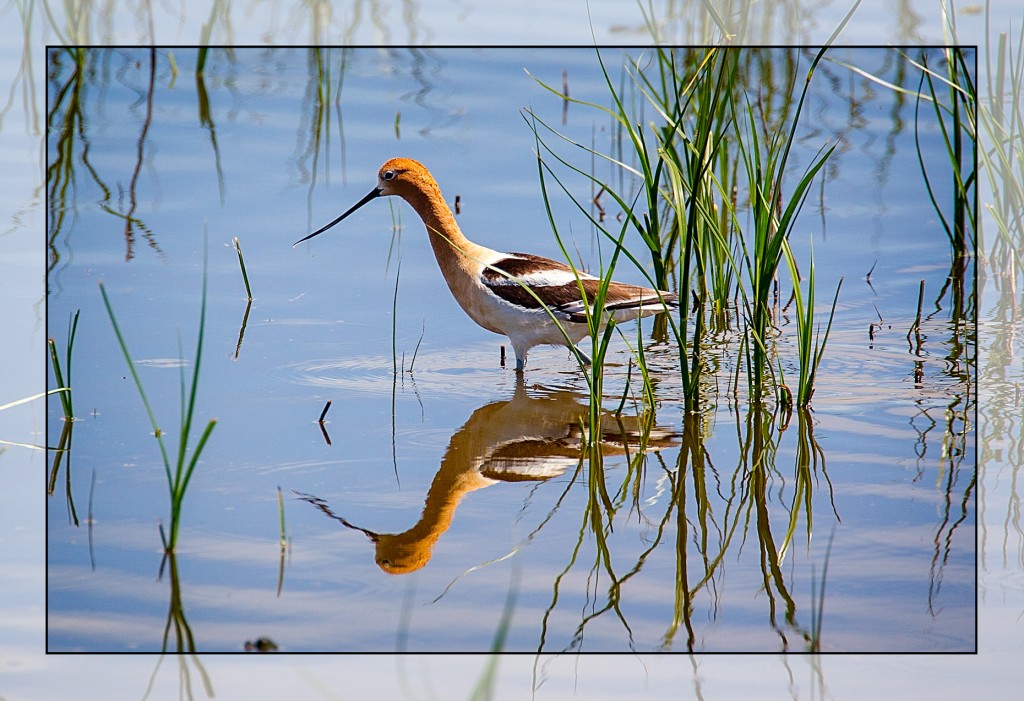The Snowy Egret is a favorite photographic subject of mine because of its feathery beauty, its masterful Tai Chi-like grace while hunting.
I’m sure, though, it’s prey must have a very different image of the bird, and I’ll find it difficult to ever see just that aspect of the egret after taking this sequence of shots.
I was watching this egret fishing, waiting for it to strike a graceful hunting pose. I certainly didn’t expect this.
Faster than a Canon can focus, it flew to the top of the dam to confront another Snowy Egret that had dared to intrude on its personal fishing hole.
The intruder obligingly left the scene
which normally defuses the conflict and the winner is content to go back to hunting, but this Snowy Egret didn’t seem content at all,
pursuing the offender until they were both long out of sight.
Apparently it takes more than beauty and grace to thrive in the real world, unless, of course, we expand our definition of beauty and grace.

